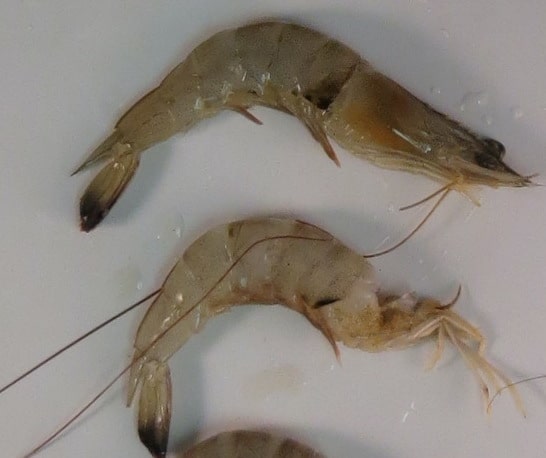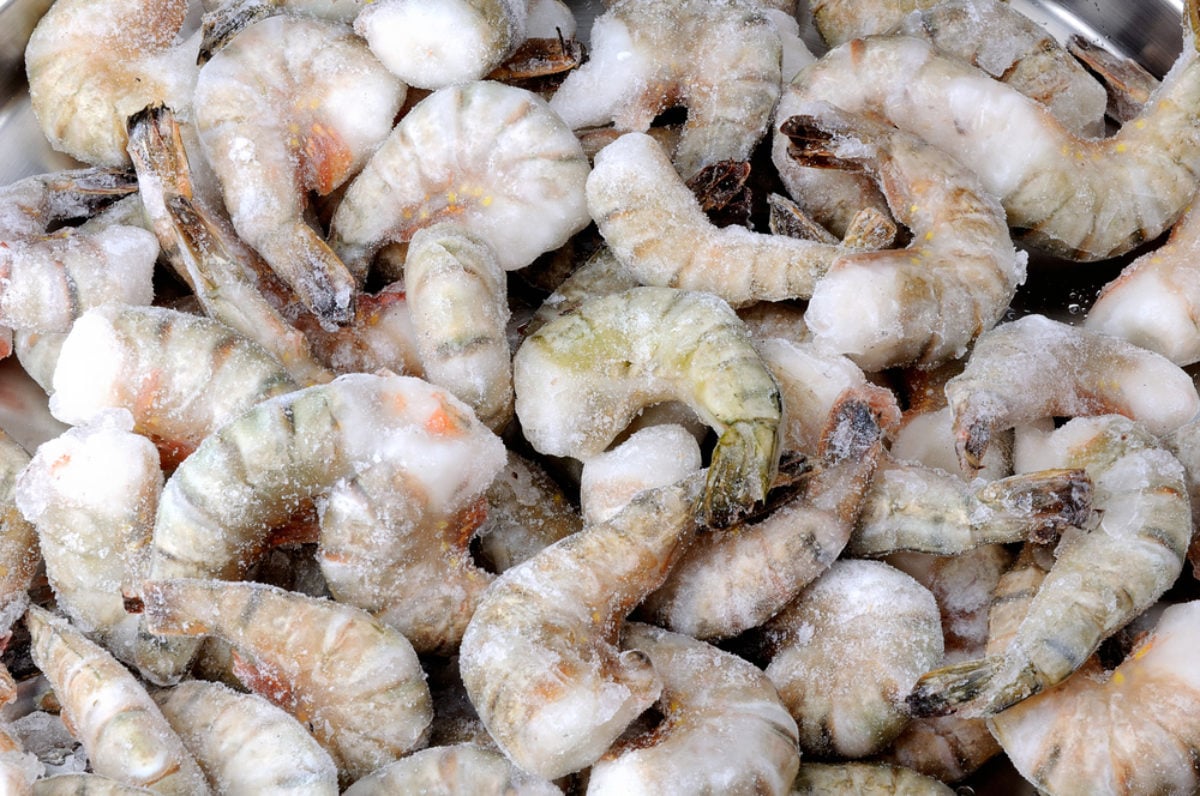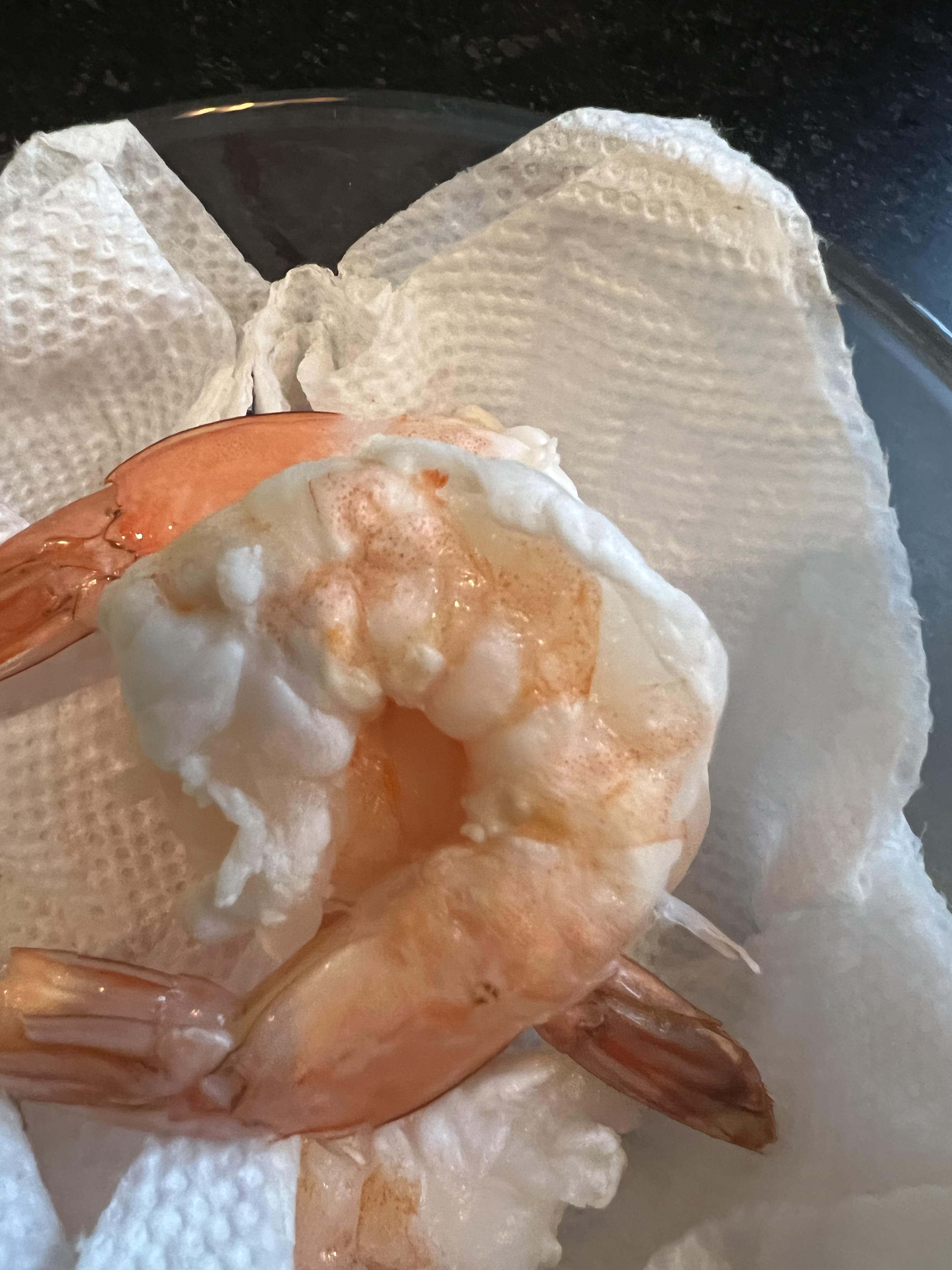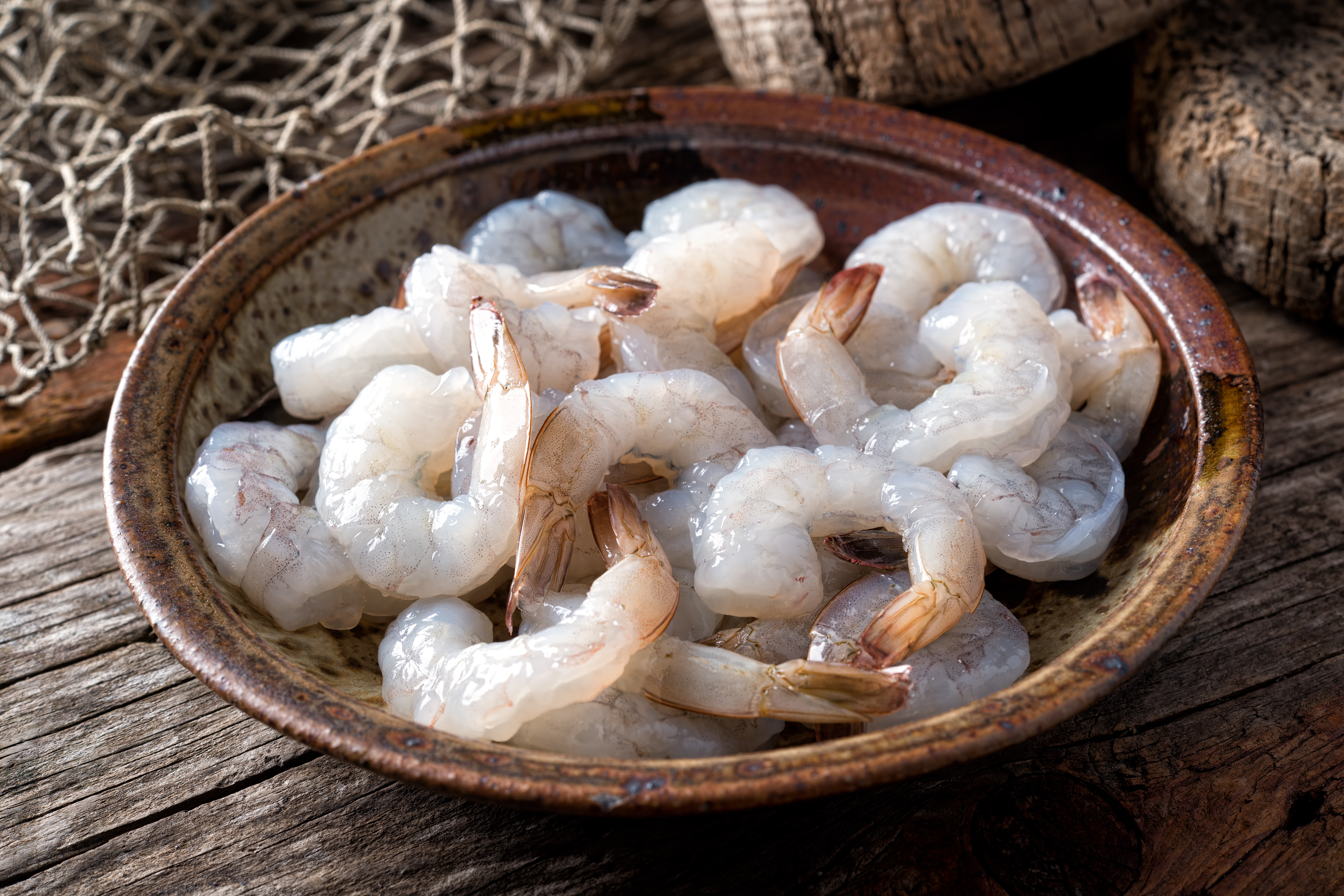Visual Examination

Visual Examination: When figuring out if shrimp is bad, a visual examination can help determine its freshness. Check for any visual signs of spoiled shrimp, such as discoloration in the flesh or shells. Raw shrimp should be white and slightly transparent, while cooked shrimp should be pink. Any signs of yellow or gritty shells may indicate spoilage. Additionally, examine the heads and shells to ensure they are not discolored. By visually inspecting the shrimp, you can identify any noticeable changes that may indicate spoilage.
Visual Signs Of Spoiled Shrimp
Visual signs of spoiled shrimp can be easily identified through a visual examination. Fresh raw shrimp should have a white and slightly transparent flesh, while cooked shrimp should appear pink. Any discoloration in the flesh or shells, such as yellowing or a gritty texture, is an indication that the shrimp is spoiled. Additionally, inspect the heads and shells for any signs of discoloration. These visual changes can help determine if the shrimp is no longer fresh and should be avoided. It is important to properly inspect the shrimp before purchasing or consuming it to avoid any potential health risks.
Smell Check For Bad Shrimp
To determine if shrimp is spoiled, a smell check is an effective method. When examining raw shrimp, a sour ammonia-like odor is a clear indication of spoilage. The same applies to cooked shrimp, which will emit a similar unpleasant smell if it has gone bad. This odor is a result of bacteria growth and should not be ignored. If you detect this off-putting smell, it is best to discard the shrimp immediately to avoid any potential health risks. Trust your sense of smell when it comes to identifying and avoiding bad shrimp.
Texture And Color

Changes in texture can also indicate that shrimp has spoiled. If the shrimp feels slimy or mushy to the touch, it is likely past its prime. In addition, the color of shrimp can provide clues to its freshness. Raw shrimp should be gray or white in color, and may even appear translucent. Cooked shrimp, on the other hand, should have a pinkish color. Any discoloration, such as a gray or green hue, can be a sign of spoilage. It is important to pay attention to both the texture and color of shrimp to ensure its quality.
Changes In Texture Indicating Spoiled Shrimp
Spoiled shrimp can undergo changes in texture that are a clear indication of its spoilage. When inspecting the shrimp, it should feel firm and slightly springy to the touch when cooked. However, if the texture is slimy or mushy, it is a definite sign that the shrimp has gone bad. This change in texture is often accompanied by a strong unpleasant odor. It is crucial to pay attention to these texture changes when determining the freshness of shrimp to avoid any potential health risks associated with consuming spoiled seafood .
Color Changes As A Sign Of Shrimp Spoilage
Color changes can also indicate spoilage in shrimp. Fresh raw shrimp should have a gray or white color, sometimes even appearing translucent. However, if you notice any spots or discoloration on the shrimp, it is a clear sign that it has gone bad. The presence of black spots or a yellowish hue can indicate bacterial growth or oxidation, which can affect the taste and quality of the shrimp. It is crucial to discard shrimp with noticeable color changes to prevent any potential health risks.
Expiration Date And Storage

The expiration date on shrimp packaging is an important indicator of its freshness. Always check the date before purchasing or consuming shrimp. It is crucial to store shrimp properly to prevent spoilage. Fresh shrimp should be kept in the refrigerator at temperatures below 40°F (4°C) and consumed within two days. If you plan on keeping shrimp for longer, it is recommended to freeze them. Store frozen shrimp in airtight containers or freezer bags to maintain their quality. Proper storage practices ensure that shrimp stays fresh and safe to eat for longer periods.
Understanding Expiration Dates On Shrimp Packaging
Expiration dates on shrimp packaging provide important information about the freshness and shelf life of the product. These dates are typically printed on the packaging and indicate the date by which the shrimp should be consumed for optimal quality. It is crucial to pay attention to these dates and consume the shrimp before they expire. Expired shrimp may have a higher risk of spoilage and may not be safe to consume. By understanding and following expiration dates, you can ensure that you are consuming fresh and safe shrimp.
Proper Storage Methods To Prevent Shrimp Spoilage
Properly storing shrimp is essential to prevent spoilage and maintain its freshness. Here are some important storage methods to follow:
- Refrigeration: Shrimp should be placed in airtight containers or sealed plastic bags before storing them in the refrigerator. The temperature should be set to 32-38°F (0-3°C) to keep the shrimp cold and slow bacterial growth.
- Use within 2 days: Shrimp should be consumed within two days of purchase or defrosting. Avoid keeping shrimp for extended periods, as it may increase the risk of spoilage.
- Avoid cross-contamination: Store shrimp separately from other foods, especially raw meat and poultry, to prevent contaminating the shrimp with harmful bacteria.
By following proper storage methods, you can extend the shelf life of shrimp and ensure its safety for consumption.
Cooking And Eating

When it comes to cooking and eating shrimp, it’s crucial to ensure that the shrimp is fresh and not spoiled. Cooking spoiled shrimp will not eliminate the bacteria or toxins that may be present, so it is important to identify any signs of spoilage beforehand. When cooking shrimp, be sure to look for a vibrant color and firm texture. Avoid any shrimp that is discolored, slimy, or has an unpleasant odor. Similarly, when eating cooked shrimp, pay attention to any changes in taste or texture that may indicate spoilage. Remember, consuming spoiled shrimp can lead to food poisoning, so it’s better to be safe than sorry.
Cooked Shrimp Appearance For Spoilage
When it comes to cooked shrimp, the appearance is an important indicator of spoilage. If you notice any changes in the appearance of cooked shrimp, it could be a sign that it has gone bad. Spoiled cooked shrimp may have a faded or gray color, instead of the usual pinkish hue. Dark spots or discoloration on the shrimp can also indicate spoilage. Additionally, if the shrimp appears slimy or has a mushy texture, it is best to discard it. Remember, consuming spoiled shrimp can lead to food poisoning, so it’s important to be vigilant about its appearance.
Taste And Texture Changes When Bad Shrimp Is Consumed
Consuming bad shrimp can lead to noticeable changes in both taste and texture. When shrimp is spoiled, it can develop a strong, unpleasant odor that is difficult to ignore. Similarly, the taste of bad shrimp is often described as fishy or ammonia-like, which can be quite off-putting. In terms of texture, spoiled shrimp may become slimy or mushy, lacking the firmness and natural snap that fresh shrimp should have. These changes in taste and texture are clear indicators that the shrimp is no longer safe to eat and should be discarded immediately to avoid any potential health risks or food poisoning.
Health Concerns

Consuming spoiled shrimp can pose health risks that should not be ignored. Spoiled shrimp may contain harmful bacteria such as Vibrio, Salmonella, or Listeria, which can cause food poisoning. Symptoms of shrimp-related food poisoning may include stomach cramps, diarrhea, vomiting, and fever. In severe cases, it can lead to dehydration and require medical attention. It is crucial to prioritize food safety and discard any shrimp that shows signs of spoilage to avoid these health concerns. If you experience any of these symptoms after consuming shrimp, seek medical advice immediately.
Health Risks Associated With Consuming Spoiled Shrimp
Consuming spoiled shrimp can pose health risks that should not be ignored. Spoiled shrimp may contain harmful bacteria such as Vibrio, Salmonella, or Listeria, which can cause food poisoning. Symptoms of shrimp-related food poisoning may include stomach cramps, diarrhea, vomiting, and fever. In severe cases, it can lead to dehydration and require medical attention. It is crucial to prioritize food safety and discard any shrimp that shows signs of spoilage to avoid these health concerns. If you experience any of these symptoms after consuming shrimp, seek medical advice immediately.
Symptoms Of Shrimp-related Food Poisoning
Symptoms of shrimp-related food poisoning can vary depending on the type of bacteria present in the spoiled shrimp. Common symptoms include stomach cramps, diarrhea, vomiting, and fever. In severe cases, it can lead to dehydration and may require medical attention. It is important to note that symptoms can appear within a few hours to a few days after consuming contaminated shrimp. If you experience any of these symptoms after consuming shrimp, it is recommended to seek medical advice immediately. Prioritizing food safety and avoiding the consumption of spoiled shrimp can help prevent these health concerns.
Conclusion

In conclusion, being able to identify spoiled shrimp is crucial for ensuring food safety and avoiding any potential health risks. By conducting a visual examination, checking for any changes in texture and color, understanding expiration dates, and practicing proper storage methods, individuals can minimize the chances of consuming bad shrimp. It is important to note that spoiled shrimp can lead to food poisoning and cause symptoms such as stomach cramps, diarrhea, vomiting, and fever. Prioritizing freshness and quality when handling and consuming shrimp is key for a safe and enjoyable dining experience. For more information on seafood safety, individuals can refer to additional resources provided by experts in the field.
Tips To Identify And Avoid Bad Shrimp
To ensure you can identify and avoid bad shrimp, it is important to follow these tips. First, conduct a visual examination of the shrimp, looking for any discolored spots or slime. Check for a strong ammonia-like smell, as this could indicate spoilage. Additionally, pay attention to the texture of the shrimp, as sliminess or a mushy consistency can be signs of spoilage. Always check the expiration date on the shrimp packaging and store it properly in the refrigerator. Lastly, when cooking and consuming shrimp, be mindful of any off tastes or unusual textures. By being vigilant and following these tips, you can ensure that you only enjoy fresh and safe shrimp.
Additional Resources For Seafood Safety And Freshness
For more information on seafood safety and freshness, there are several resources available. The Food and Drug Administration (FDA) provides guidelines and regulations on seafood handling, storage, and labeling. The National Oceanic and Atmospheric Administration (NOAA) offers educational materials and resources on sustainable seafood practices. The Seafood Watch program by the Monterey Bay Aquarium provides recommendations on sustainable seafood choices. Additionally, local extension offices and universities often have resources and publications on seafood safety. These resources can help consumers make informed choices when it comes to selecting and consuming seafood.
FAQ About How To Tell If Shrimp Is Bad: Signs Of Spoiled Shrimp To Watch For
Q: How can one tell if shrimp has gone bad?
A: Some signs that shrimp has spoiled include a fishy odor, slimy texture, discolored shell, or the presence of black spots.
Q: What does fresh shrimp smell like?
A: Fresh shrimp should have a mild, salty, and seawater-like scent. If it smells overly fishy or ammonia-like, it may be spoiled.
Q: Can shrimp make you sick if it’s gone bad?
A: Yes, consuming spoiled shrimp can lead to food poisoning, characterized by symptoms like nausea, vomiting, diarrhea, and stomach cramps.
Q: How should spoiled shrimp be discarded?
A: It is recommended to dispose of spoiled shrimp immediately, sealing it in a plastic bag before throwing it away to prevent the spread of bacteria.
Q: How long can cooked shrimp be safely stored in the refrigerator?
A: Cooked shrimp can be stored in the refrigerator for up to 3 days in an airtight container to maintain its freshness and taste.
Q: What is the best way to store fresh shrimp to prevent spoilage?
A: To prevent shrimp from spoiling, store it in the coldest part of the refrigerator, either wrapped in a damp paper towel or in airtight packaging, and use it within two days of purchase.

Johnny Knuckles Knock-out BBQ is a culinary haven for barbecue enthusiasts, offering a fusion of traditional BBQ and tantalizing street fare. Our secret to delivering mouthwatering dishes lies in our meticulous preparation process. Each cut of meat is lovingly hand-rubbed and slow-smoked over 100% hardwood, creating a symphony of flavors that will leave your taste buds dancing. Whether planning a special event or simply craving an unforgettable meal, Johnny Knuckles Knock-out BBQ is here to elevate your dining experience. Our catering services are designed to bring the sizzle and aroma of our delectable BBQ to your event, ensuring that every guest leaves with a full belly and a smile.